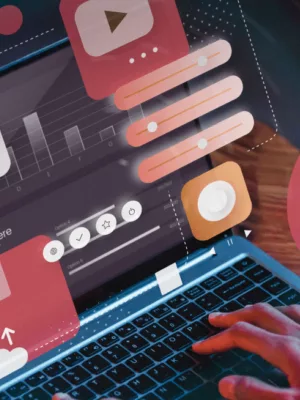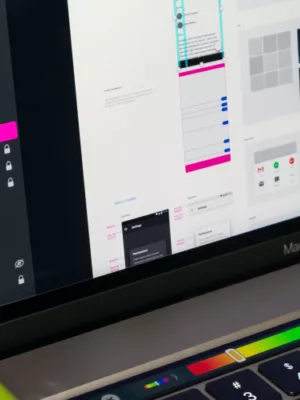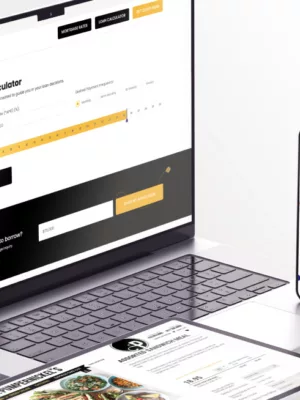
Embarking on the journey of creating a digital product is similar to navigating a complex and dynamic landscape. It's not just about having a great idea; it's about seamlessly transforming that idea into a tangible, user-friendly solution. At the heart of this process is a skilled and diverse team, each member possessing the expertise to bring the digital dream to life. As per a famous quote, “Alone we can do so little; together we can do so much.”
In this blog post, we're uncovering the essence of the digital product – the critical steps of the process and components of assembling a digital product design team that can turn vision into reality. From setting clear objectives to understanding the nuanced roles within the team, we will guide you through what it takes to develop a great product design that resonates with users and makes the brand stand out.
Setting objectives for success
In any project, setting clear goals and success is foundational. While you may be familiar with the language of key performance indicators (KPIs), the essence lies in understanding and articulating what success looks like. This can range from the customer satisfaction level to more tangible metrics like the number of generated leads to conversions and many others. All these elements paint a clear picture of digital product success.
Now, let's explore the design process, examining the specific objectives at each stage and the roles involved. In essence, we're seeking to grasp the what, the why, and the who of each phase – understanding not only what tasks are performed but also their purpose and the individuals responsible for them.
Step 1: Creating project brief
The initial phase involves developing the project brief. Here, the team immerses itself in understanding the desired outcomes, the project's scope, and specific criteria that will steer their design.
Step 2: UX research and analysis
Building on the insights from the project's brief, the team engages in comprehensive UX research. This step involves studying user behaviors, preferences, and market research, including overall opportunities, challenges, and competitive landscape. By doing it right, you get all the information to make data-driven decisions leading to a customer-centric product.
Step 3: UX design phase
With a solid understanding of client requirements and user insights, the team moves into the UX design phase. This involves creating wireframes, prototypes, and user flows that serve as the blueprint for an intuitive and user-friendly interface.
Step 4: Information architecture development
Next is developing a robust information architecture. This process ensures that users can navigate the digital terrain effortlessly, finding the information they seek without losing their way.
Step 5: Conducting rigorous user testing
In the testing phase, the design is put to the test in the real world, collecting valuable feedback from users. This iterative process is like refining a compass, ensuring it points accurately to user needs and expectations. In parallel, the team analyzes user behavior through tools like analytics and heat maps. These insights help understand how users interact with the design, spotlighting areas for improvement.
Step 6: UI design
As the UX takes shape, the team transitions to UI design. This stage is where wireframes bloom into visually appealing interfaces, complete with color schemes, icons, and interactive elements. At this point, clients are expected to get UI mockups, style guides, and a library of visual elements.
Step 7: Design system integration
The final touch in this phase is integrating the UI design into a unified design system. This ensures consistency across the project, maintaining a coherent visual language.
By following these steps, from objectives to the final stage, where all elements organically come into play, the design team ensures that the product has been designed with the customer in mind, following the best design practices.
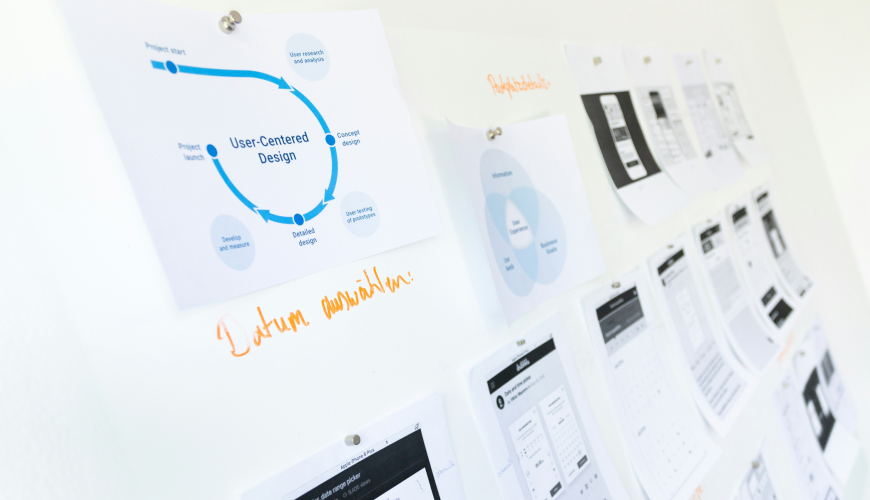
All you need to know about the design team
Now, let's look at the various roles in the product design process. Sometimes, these roles have overlapping responsibilities, which means that not every specialist is a must for every project. The list below outlines key roles and responsibilities you should be aware of when launching a new digital product.
The Project manager (PM) oversees the entire design process, ensuring timely delivery, budget and efficient resource allocation. Among the responsibilities tasks of the PM, there are:
Develop project timelines and milestones, ensuring they align with client expectations and team capabilities.
Coordinate team efforts, facilitating collaboration between different departments and stakeholders.
Manage client communications, providing updates on project progress, addressing concerns, and managing expectations.
UX specialist’s role is to focus on user research, wireframing, and creating prototypes to enhance the overall user experience. Key tasks include:
Conduct user interviews, surveys, and usability studies to gather insights and feedback.
Analyze user data and feedback to identify pain points and opportunities for improvement.
Develop wireframes and prototypes, iterating based on user testing and feedback to optimize usability.
UI designer transforms wireframes into visually appealing designs, considering brand aesthetics and user interface elements. The main tasks are:
Select color schemes, typography, and visual elements that align with the brand and enhance user experience.
Design icons, buttons, and other interactive elements for a cohesive and visually engaging interface.
Collaborate with UX specialists to ensure visual design complements and enhances usability.
Content specialist manages content creation and ensures it aligns with the overall design and messaging strategy. The tasks of the content specialist are vast and:
Develop content that resonates with target audiences, considering user personas and brand guidelines.
Collaborate with the UX/UI teams to ensure content supports the design and enhances user experience.
Maintain consistency in tone, voice, and messaging across different platforms and interfaces.
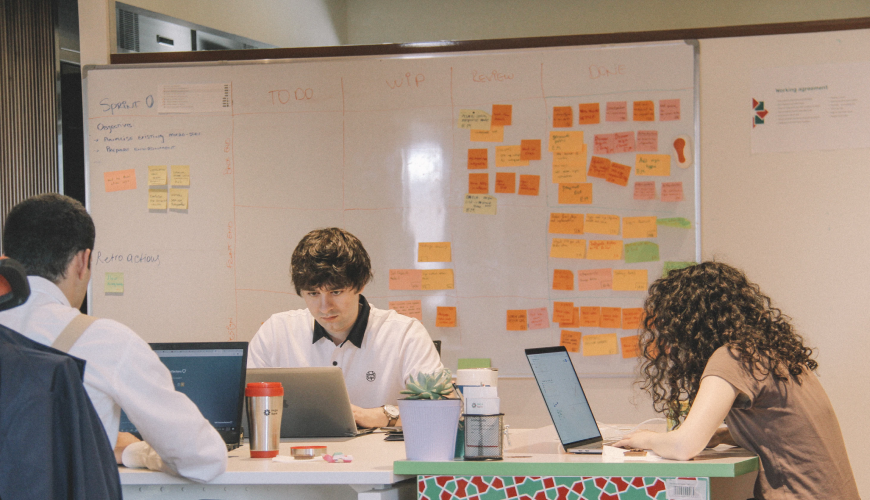
Developers:
Full-stack developers handle front-end and back-end development tasks, ensuring a holistic approach to product functionality. Their responsibilities include:
Implement features, functionalities, and databases to ensure a seamless user experience.
Optimize performance by addressing both client-side and server-side aspects of the application.
Front-end developers translate UI/UX designs into responsive and interactive web pages by coding and implementing user interfaces using HTML, CSS, JavaScript, and other relevant technologies. They have to ensure compatibility and responsiveness across different devices and browsers.
The back-end developers usually manage server-side development, databases, and application logic, including developing and maintaining server-side architecture, focusing on security, performance, and scalability, handling database management, and ensuring efficient data storage and retrieval.
Infrastructure Specialist manages the technical aspects of deployment, hosting, and server maintenance.
Key tasks include:
Configure and manage server environments, ensuring optimal performance and security.
Oversee hosting services, potentially utilizing platforms like Azure, AWS, or other cloud services.
Handle deployment processes, ensuring smooth transitions from development to production environments.

QA tester runs the quality and functionality of the product through rigorous testing. The scope of tasks includes:
Conduct various testing methods such as functional, regression, and usability testing.
Identify and document bugs or issues, working closely with developers to resolve them.
Provide feedback on improvements and ensure adherence to quality standards.
When it comes to assembling a design team, it is a nuanced process that requires a balance of skills, collaboration, and a shared vision. You have to make a decision whether to build an in-house team or to outsource. Each option comes with its distinct set of advantages, tailored to different business needs and long-term objectives.
An in-house design team allows for ongoing collaboration, which is essential for iterative projects. It ensures alignment with the company culture and provides direct control over the design process. This approach is especially beneficial for businesses with long-term, evolving design needs.
Outsourcing opens access to a bigger talent pool, offering specialized skills that may not be available in-house. It's cost-effective for short-term or niche projects and provides flexibility in scaling the team according to project needs. Ideal for businesses seeking specific expertise or facing variable project demands.
At Convergene, we guide our clients through this decision-making process, ensuring the development of effective digital solutions. We leverage the best design practices and the most suitable tools to tailor solutions that serve our clients’ expectations.





